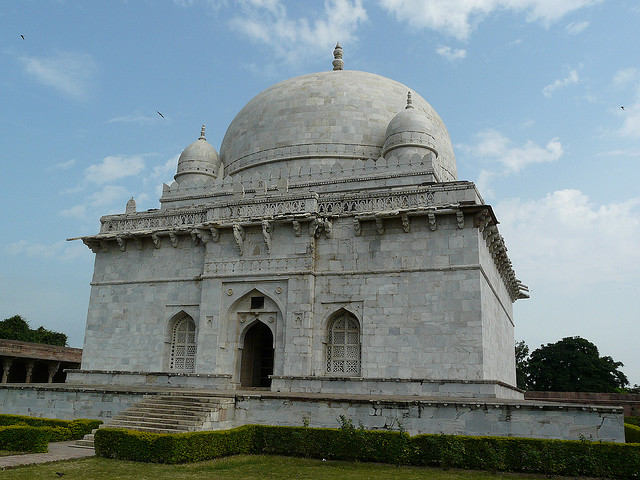Magnificently proportioned domes and intricately & delicately done marble latticework are the main features of Hoshang Shah's Tomb. This tomb is one of the best examples of Afghan architecture in India and probably the first marble edifice. Porticoed courts and towers mark the four corner of the rectangular tomb. It was from this tomb that Ustad Hamid got inspiration for designing Taj Mahal. Many architects were send by Shah Jahan to study this tomb and then decide the constructing plan of the Taj.
Tomb of Hoshang Shah, square enclosed space near the Jami Masjid, is India’s first marble monument built in 1440 AD. It is a superb refined example of Afghan architecture existed in India, as a monument of Afghan invasion.
It has a beautiful dome, a well-proportioned one, with complex marble latticework and portioned courts and towers. The beautification on the south entrance carries rosettes in respite and lotus flowers with blue enamel stars. The next level goes as an octagonal shape and the third level becomes 16 sided.
The tomb overwhelmed Shah Jahan and he deputed four of his architects to learn the architecture of the tomb before the design of Taj Mahal. Ustad Hamid, one of the deputed, has been connected with the construction of the Taj Mahal.
The Hoshang Shah's tomb, Mandu is a wonderful example of Afgan art and architecture. The monument bears well-balanced dome with convoluted marble work. The uniqueness and the wonderful decoration on the southern doorway portray the lotus and the blue enamel stars.
Image Credit:
http://www.flickr.com/photos/varunshiv/3926452209/in/set-72157622267018…

